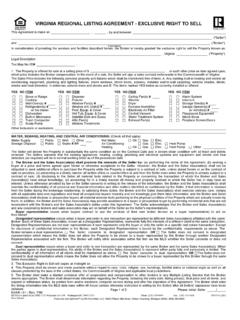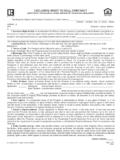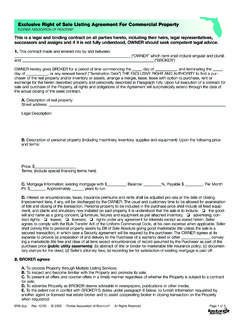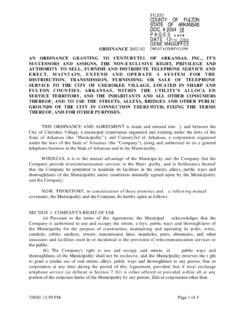Transcription of Subject: SHAMLAT LANDS - ahmedandqazi.com
1 Subject: SHAMLAT LANDS Dear Sir, Our opinion has been required as to whether LANDS described as SHAMLAT in revenue papers can be accepted to secure financial facilities that may be extended by the Bank. SHAMLAT LANDS are a peculiar feature of development of village communities in this part of the world and have historical as well as socio-cultural background that must be taken into consideration before the relevant concepts can be understood. This opinion is, therefore, divided into three main parts. The first part deals with the historical background, the second with practices relating to Shamlats, and the third part addresses matters that might have a bearing on accepting SHAMLAT property as security by a financial institution.
2 Historical Background 1. a) The Province of Punjab was constituted in 1849. The East India Company had established its complete supremacy in the area after defeating its predecessors: the Sikhs. During pre-British times huge tracts of LANDS would be lying in the sovereignty of some local feudal lords. With their express or implied permission, a person could bring a portion of the waste land under his cultivation by digging up a well. The original cultivator of the waste land and his associates would constitute the original land owners and the land actually being cultivated by them would become their property. Near this cultivated land they would set up their dwelling in a village that was collectively owned by them.
3 B) After the British takeover, formal settlement regarding payment of land revenue was made by the British powers with the land owners. Initially summary settlements were made and then periodical permanent settlements commenced around middle of the nineteen century. c) Around the cultivated land owned by the original founding families of a village, there could be huge tracts of waste land called SHAMLAT land , collectively owned by the village owners over which they would have a right either to reclaim the land themselves or allow others also to do so. The original owners were called Aala Maliks and others who had reclaimed the land with their consent were called Adna Maliks.
4 The Aala Maliks had the right to bring further SHAMLAT waste land under cultivation by digging wells or adopting some other means. In certain cases even Adna Maliks would have the right to expand the area of their ownership by reclaiming SHAMLAT land . However, an Adna Malik could not allow strangers to bring the SHAMLAT land under cultivation. Persons who had reclaimed land as Adna Maliks, as well as those who had been transferred rights only to a piece of land (without the right to SHAMLAT LANDS ) were called Malik Qabza . There could also be another class, mainly herdsmen, enjoying grazing rights over the SHAMLAT waste LANDS and paying a fee for it ( Tirni ).
5 D) The British also commenced the process of formally demarcating village boundaries in Punjab, around the middle of the 19th century (which till 1901 included NWFP areas also). At the time of the first settlement formal records were prepared as to what land constituted private property of the original land owners and what constituted the SHAMLAT . The exact area of SHAMLAT land was also specified. There could be some scope of variation regarding the rights to SHAMLAT land but the main structure was that such land belonged to the Aala Malkan. 2. A unit of agricultural land independently owned is called a Holding ( Khewat ) and the owner of the land would be called the Khewatdar.
6 The Khewatdars were collectively treated as owners of the village (Malkan Deh). To the extent of their individual or collectively private properties as Khewatdars such property belonged exclusively to them. It is possible that a single owner holds an entire Khewat or that the Khewat is co-owned by a number of persons. As regards the SHAMLAT properties the Khewatdars would enjoy collective rights of various natures. These rights find mention in important land revenue record documents called Wajab-ul-Arz . This document records various customs and usages of the village. Whether on partition of the SHAMLAT the land would be divided on the basis of individual ownership or revenue payments for the Khewat land , or some other basis, would again be a matter mentioned in the Wajab-ul-Arz.
7 Grazing rights of herdsmen and the rights of Adna Malikan were also taken note of in the Wajab-ul-Arz. The fundamental idea that must be kept in mind is that SHAMLAT land is not some class of ownerless land . It is a land that is fully owned by the Khewatdars, but the ownership is collective in nature and not exclusive . 3. SHAMLAT land would include the waste land held in common by the Khewatdars (whether or not brought under cultivation by them) as well as the land allocated for residential purposes of the Khewatdars (Abadi Deh). The Abadi Deh would comprise areas where houses had been actually constructed as well as areas reserved to meet certain other needs of the Abadi such as places of worship, graveyards, areas reserved for village expansion, or communal activities, etc.
8 (Gora Deh). 4. Unlike Malkan Deh who enjoyed a number of rights regarding village property, Malkan Qabza were those who owned only the land actually acquired by them and which was in their possession. They had no share in the SHAMLAT of the village community or in the various rights, profits and privileges vesting in the proprietary body of the village, Malkan Deh. 5. In addition to rights of ownership in the nature of Malik Qabza arising in land that was SHAMLAT Deh, another kind of right also arose in such LANDS . Where a person without the consent of the village owners brought a land under cultivation such person became a tenant under the village owners with the right to use the property as long as he paid the rent and fulfilled other obligations of the tenancy.
9 Such tenants were called Occupancy Tenants, Dakheelkars, Muqarraridars etc. An occupancy tenant was entitled to mortgage or transfer his rights, but subject to certain procedures laid down in certain statutes. Since early 1950s onwards, such occupancy tenants have been permitted to obtain full ownership rights in the land in their occupation, by paying a prescribed fee. There could also be a class of cultivators who would not be occupancy tenants or Dakheelkars, but only tenants at will. 6. It may be noted that when SHAMLAT land is brought into cultivation with exclusive right of ownership vesting in the Malik Qabza, although such SHAMLAT land would cease to be part of the divisible pool of SHAMLAT , but the description of the land in the revenue records would continue to be SHAMLAT .
10 Ordinarily, the person reclaiming the land with the permission of the land owning village community, or in accordance with the terms of Wajabul Arz would, to the extent of the reclaimed land , be its owner as Adna Malik (and also Malik Qabza). The Aala Malkan also had certain other rights regarding tributes payments, in cash or in kind, generally called Malkiana Rights. Such Malkiana rights were abolished when land reforms took place under the Government of Pakistan. 7. It should also be kept in mind that where colonization of land had been made by the government through making canal waters available, or where state waste land has been made available for reclaiming land and villages had also been set up for the purposes, the SHAMLAT system, as discussed above was, in many cases, not fully operative.








